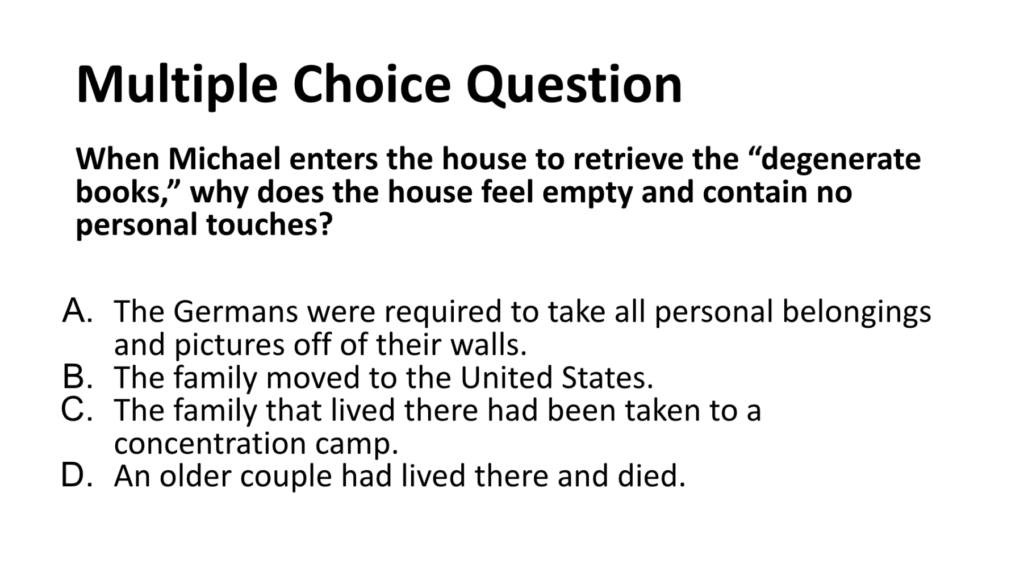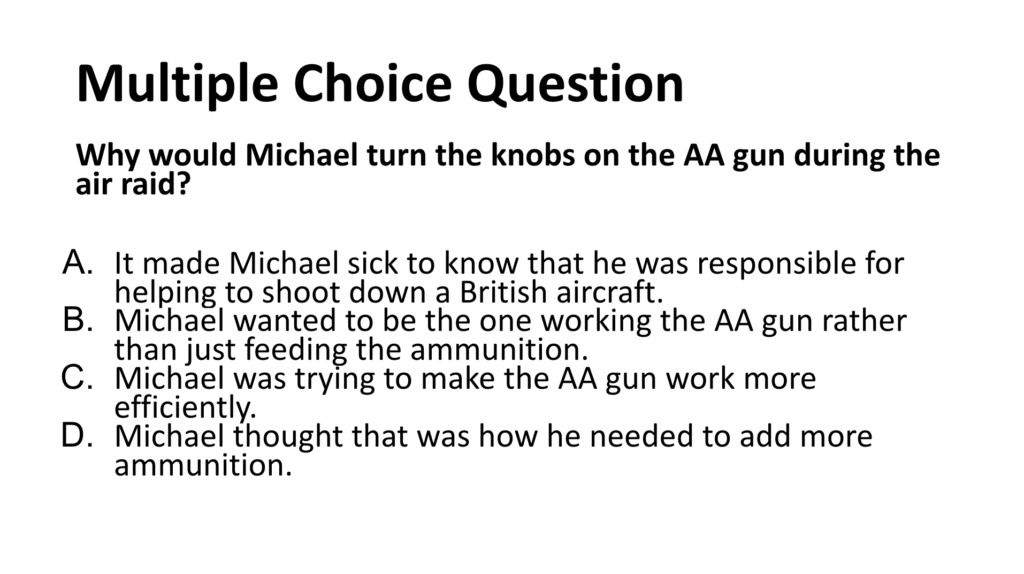It’s officially state testing season across the United States, so how do you react to this as a teacher? I generally see teachers fall into one of two extremes when it comes to state test preparation.
Extreme One: This teacher pretends that state testing isn’t happening. They refuse to acknowledge its existence and don’t mention it to their students. This teacher rests knowing that the curriculum they shared with students across the school year is preparation enough for state testing.
Extreme Two: A month before state testing begins, this teacher kicks off a state test preparation marathon and has students taking practice test after practice test while completely pausing curriculum. Preparing students for the state test is the only and most important thing.
In all honesty, I most relate to Extreme One. However, over the years, I’ve come to find a healthy in-between to help prepare students for the ELA questions and writing prompts they will experience on our state test. I’ve gathered my favorite state test preparation tips and tricks to help you find that perfect in-between as well.
Tip One: Use Test Prep as a Class Starter
Look at your reading unit or writing unit that comes right before state testing. Throughout this unit, pause your normal class starter, whether you normally do Sentence Stalking, Word Study, IXL work, or a journal prompt. Substitute state test preparation into the time you usually use to do your class starter.
This is a much better solution than putting in an entire test prep unit where you completely stop your reading and writing curriculum. Most states release a practice test. Think about how you could break this practice test apart to cover a chunk of it each day across an already scheduled reading or writing unit.
Tip Two: Incorporate Multiple Choice Questions
Whether you use an interactive read aloud during your reading units or are teaching using a whole class novel format, consider incorporating one multiple-choice question a day based on the previous day’s reading. You can have students answer the daily multiple choice question a different way each day.
- Have students hold up one finger for choice A, two fingers for choice B, three fingers for choice C, and four fingers for choice D.
- Have students write their answer on a sticky note and stick their answer in the front of the classroom to see what answer was the most popular.
- Have students discuss the correct answer with a partner and then talk about it as a whole class.
- Have students respond on a piece of loose-leaf paper with what they think the correct answer is and then a written response explaining why that is the correct answer.
- Discuss the correct answer as a whole class with student volunteers.
- Use teacher-modeled thinking to show students how you would come up with the right answer to the given question.
I would recommend doing this during the reading unit prior to state testing, if not before. This does not take much class time, and it also doesn’t overwhelm students with continuous multiple-choice questions for every reading assignment. Instead, it allows students to become comfortable with the thought process that goes into multiple choice questions about reading in a nonthreatening way.
Look at a few of the multiple-choice questions we used with our class interactive read aloud, Projekt 1065 during our historical fiction reading unit.


Tip Three: The Gradual Release of Responsibility is Your Friend
In Wisconsin, the state I teach in, the ELA Practice Test is broken down into reading, writing, and language arts (vocabulary, research, grammar, etc.). There happens to be three reading passages with coordinating questions on the reading practice test. Naturally, I planned three days of reading test preparation as a class starter that look like this:
- Day One: Teacher modeling, class follows along with Reading Passage 1
- Day Two: Partners read and answer the questions for Reading Passage 2
- Day Three: Students independently read and answer the questions for Reading Passage 3
By using the gradual release of responsibility during test prep, you may choose to use a similar format that I’ve laid out about and stretch the gradual release of responsibility out over several days.
The first step of the gradual release of responsibility would be not only reading the passage aloud and telling students what the answers to the questions are, but to actually open up your thinking to students by giving them insight to what you’re thinking and the thought process you go through while deciding how to answer each question.
The next step would be allowing students to work in partner pairs as they try out what you modeled the day before with a new reading passage and coordinating questions. Working with a partner allows students to verbalize their thought processes and feel more confident as they work as a team.
The final step would be then giving students a new reading passage with coordinating questions and have them try it out independently. Because you used the gradual release of responsibility before jumping right to trying it out independently, students will have strategies and confidence to draw from.
Tip Four: Use a Graphic Organizer for Writing
If your state test requires students to write in response to reading or in response to a stand-alone writing prompt, then practicing that type of writing with a graphic organizer is a must. Most state tests do not allow students to use a graphic organizer, but many will allow students to use a scratch piece of paper to plan out their writing.
Many students skip over the step of planning their writing and jump right into randomly writing a response. This could result in students’ responses being incomplete, minimal, rambling, and/or unorganized. My recommendation is to teach students how to strategically plan their response with the help of a graphic organizer before they even think about writing out their response during the test.
Using test prep as a class starter, here is how I sequence practicing writing responses for state testing.
- Day One: Give students the writing prompt and give students time to read the coordinating reading passage if the writing prompt is connected to a reading passage.
- Day Two: Have students plan out their response to the writing prompt with the use of a graphic organizer.
- Day Three: Have students use their graphic organizer to write their response to the writing prompt.
By practicing responding to writing prompts this way, students will quickly see the power of using a graphic organizer and how it will make the writing portion of the state test easier and less stressful.
I had my students try the process I outlined above three times with three different prompts over the course of a three-week long writing unit. The last time we tried the process out, I gave them a blank sheet of scratch paper instead of the graphic organizer and asked them to recreate the graphic organizer on the blank piece of paper. Almost all my students were able to do this with ease, and I have confidence they will also be able to do this when they take the state test.
Want to take it a step further? Incorporate reading response with a graphic organizer into your curriculum all year long.
Tip Five: Create an Academic Learning Culture All Year Long
It wouldn’t be realistic for us to believe that students will “try hard” on the state test if they don’t “try hard” during class. As middle school teachers, we know this is also the number one challenge we face daily. So, what can we intentionally do to create a classroom atmosphere that gets students to apply themselves and work to their full potential?
- Use modeling examples of assignments you’re asking students to do as readers and writers so that they get a sense of the quality of work you’re expecting.
- Incorporate consistent time for students to give each other feedback on their work during class time. Model to students what high quality feedback looks like and sounds like. Here are some more ideas for incorporating feedback.
- If you use Standards Based Grading or Standards Based Learning, encourage students to revise and strengthen the work they complete based on the feedback they receive for formative assessments.
- Have a consistent teaching framework that you use daily for reading units or writing units to create a predictable class structure and help establish positive classroom management routines.
- Hold students to high expectations. Instead of making curriculum easier and lowering student expectations, use scaffolds to help students get to where they need to be. Most students have the capabilities to rise to high expectations and will. Students who struggle academically can be supported and accommodations can be made based on individual student need.
- Follow up with students and parents early in the school year if you’re noticing a student fall into a slump or consistently not complete in-class work.
If we’re doing what we can to create an academic learning culture where it is the norm to do your best, then students’ effort on the state test will follow.





